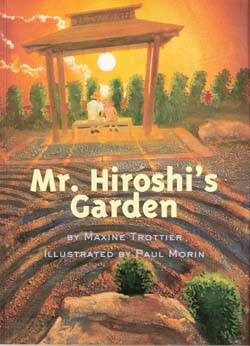 by Maxine Trottier
by Maxine Trottier
A retelling of the Japanese-Canadian internment druing World War II on the west coast.
Strategies/Skills Used
Reading Strategy 1: Access background knowledge.
Reading Strategy 2: Predict what will be learned or what will happen.
Reading Strategy 5: Make mental pictures.
Reading Strategy 6: Connect what you read with what you already know.
Reading Strategy 7: Determine the most important ideas and events and the relationship between them.
Reading Strategy 11: Make inferences and draw conclusions.
Writing Skill 5: I carefully choose the most effective words to express my ideas.
Writing Skill 7: I use my personal style to make my writing unique.
 TEACHING THE ACTIVITY: PRE-READING
TEACHING THE ACTIVITY: PRE-READING
(1) Explain to students that good readers predict what will be learned or what will happen in a reading. Find several objects that would lead students to think about who could be in the story, where and when it might take place and what it might be about. See Building From Clues.
 TEACHING THE ACTIVITY: DURING READING
TEACHING THE ACTIVITY: DURING READING
(2) Tell students that good readers make connections between their experiences and the text, comparing and contrasting how the characters feel.
(3) Create a list of approximately five different moods and have students copy the list. For example: content, alone, enthralled, anxious, ashamed, sympathetic, loved, surprised. While reading, have students check off the moods that they notice in the story. See Mood Swing.
(4) Explain to students that authors often show emotion rather than telling you directly. For example, Mr. Hiroshi’s says, “Many Japanese people sat inside it, their faces stiff with sadness.”
(5) Have students practice showing emotion in Evoking Emotion.
 TEACHING THE ACTIVITY: POST-READING
TEACHING THE ACTIVITY: POST-READING
(6) Share the importance of using the information in a text to figure out the author’s message.
(7) Create a concept circle with the words peace, war, and discrimination. Leave the fourth quadrant blank and have students fill it in with one or two words that relate to the others. See Concept Circles.